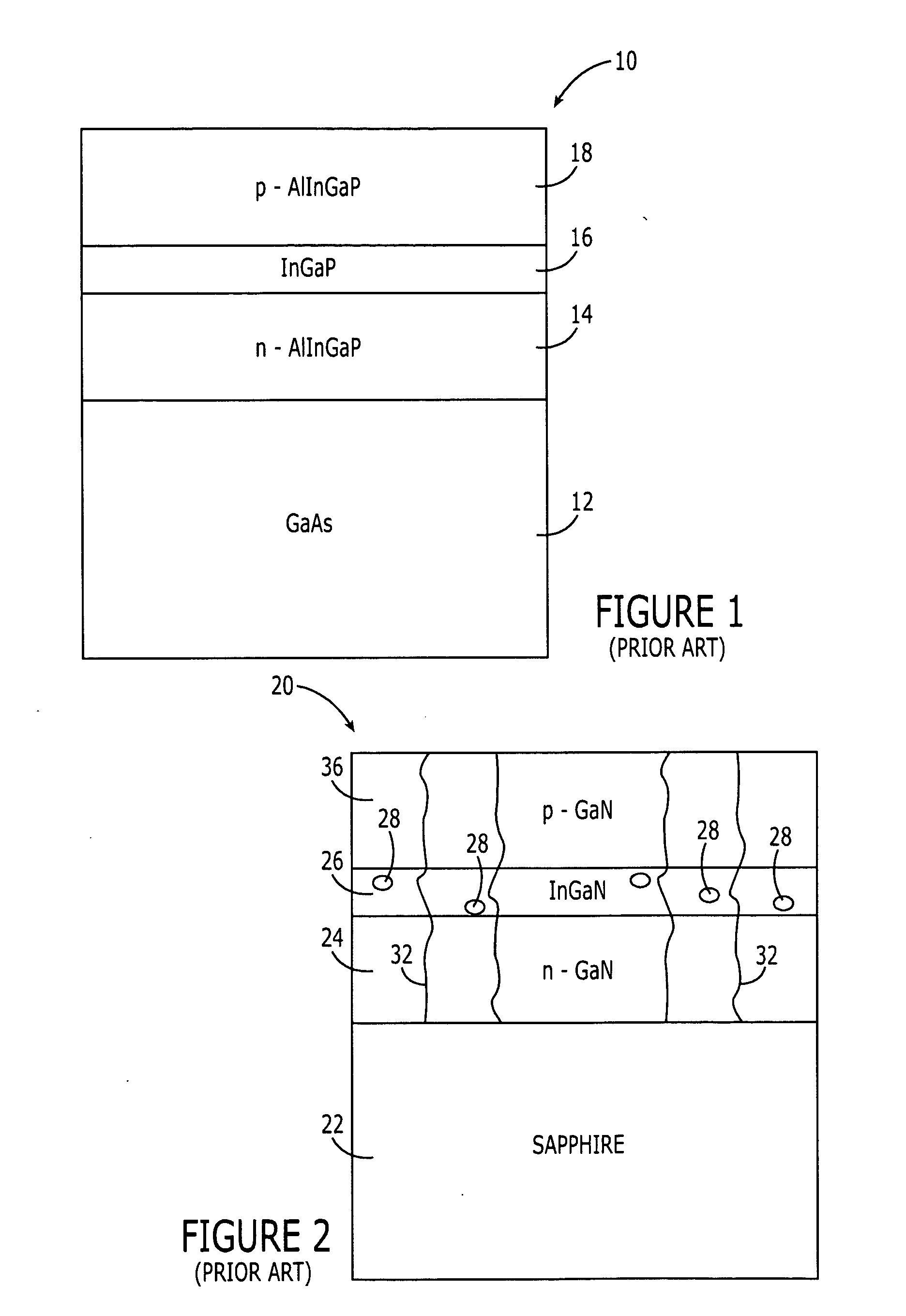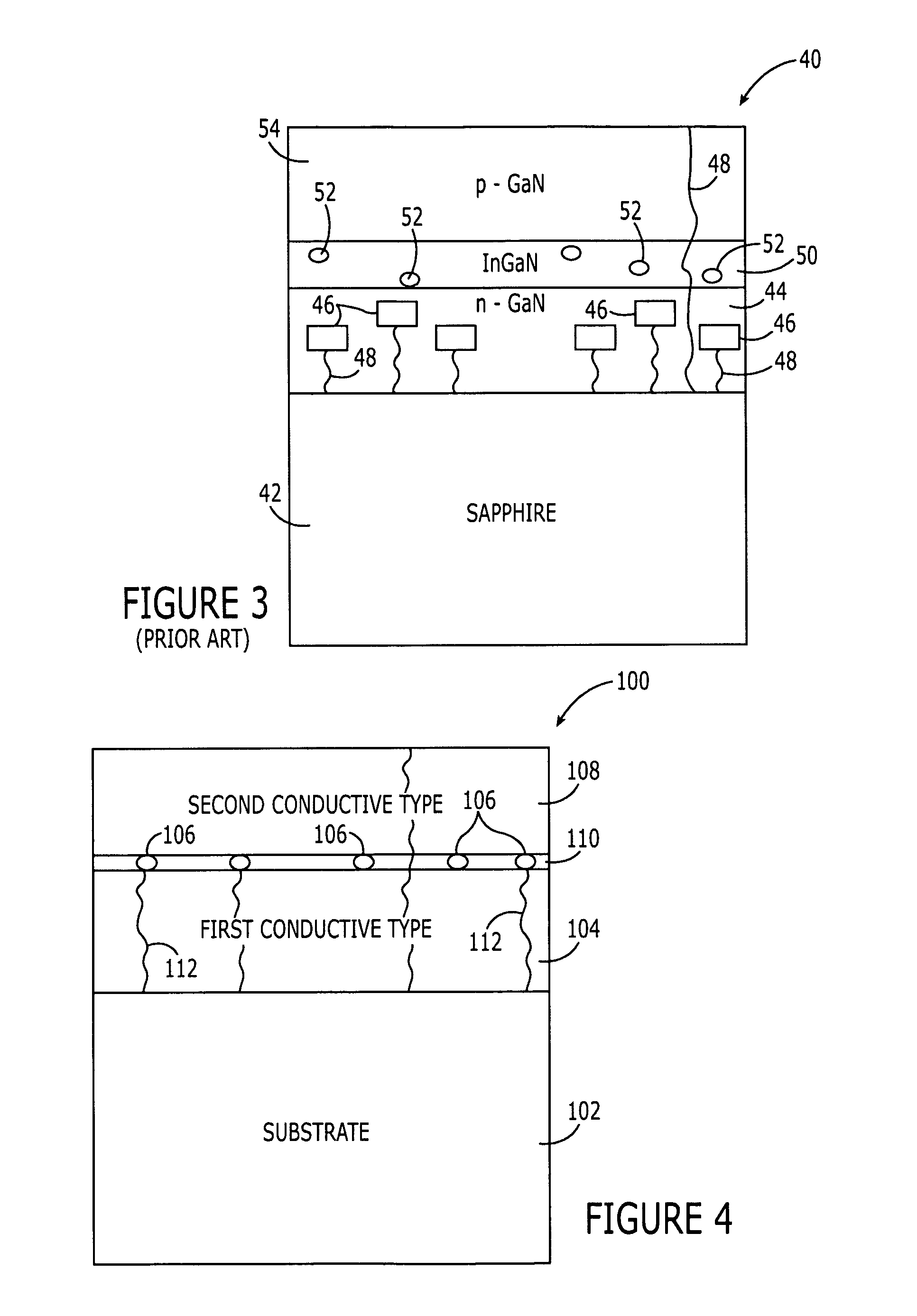Quantum dot optoelectronic devices with nanoscale epitaxial lateral overgrowth and methods of manufacture
- Summary
- Abstract
- Description
- Claims
- Application Information
AI Technical Summary
Benefits of technology
Problems solved by technology
Method used
Image
Examples
Embodiment Construction
[0036] The present inventions now will be described more fully hereinafter with reference to the accompanying drawings, in which some, but not all embodiments of the invention are shown. Indeed, these inventions may be embodied in many different forms and should not be construed as limited to the embodiments set forth herein; rather, these embodiments are provided so that this disclosure will satisfy applicable legal requirements. Like numbers refer to like elements throughout.
[0037] The present invention provides for optoelectronic devices that incorporate quantum dots as the electroluminescent layer in an inorganic wide-bandgap heterostructure. Examples of such devices include quantum dot light emitting diodes (QD-LED), laser diodes, photodetectors and the like. The quantum dots serve as the optically active component of the device and, in multilayer quantum dot embodiments, facilitate nanoscale epitaxial lateral overgrowth (NELOG) in heterostructures having non-lattice matched s...
PUM
 Login to View More
Login to View More Abstract
Description
Claims
Application Information
 Login to View More
Login to View More - R&D
- Intellectual Property
- Life Sciences
- Materials
- Tech Scout
- Unparalleled Data Quality
- Higher Quality Content
- 60% Fewer Hallucinations
Browse by: Latest US Patents, China's latest patents, Technical Efficacy Thesaurus, Application Domain, Technology Topic, Popular Technical Reports.
© 2025 PatSnap. All rights reserved.Legal|Privacy policy|Modern Slavery Act Transparency Statement|Sitemap|About US| Contact US: help@patsnap.com



